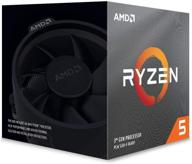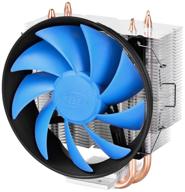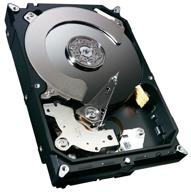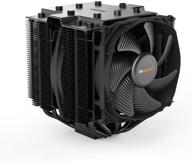
Review on 💪 Intel Core i5-3570 Quad-Core Processor: Fast 3.4 GHz Speed and 6 MB Cache for High-Performance Computing - LGA 1155 Compatible (BX80637I53570) by Wiktor Prusek ᠌

Good quality product, I rate this purchase excellent.
About overclocking. It is important to remember that Ivy Bridge is the tick step in Intel's tick-tock strategy. That is, they took the existing architecture and simply reduced it, along the way a little (well, okay, actually quite noticeably) optimizing something there. NATURALLY, such a processor will heat up more under the same conditions, it would be strange to expect the opposite at all! Yes, the method that was used on Sandy Bridge, when you could increase the voltage quite freely without a sharp increase in heat, does not work. However, if you take (see my technical data at the end) a good motherboard (for example, GIGABYTE GA-Z77X-UD3H), memory (at least 1600 native MHz), and, most importantly, a powerful cooler (for example, Zalman CNPS9900A) and a normal thermal grease (in my case, for example, it turned out that the good old KPT-8 is much better than the one that came with the cooler), you can achieve excellent results. I overclocked my 3570K from 3400 to 4900 MHz (49×100) at VCore = 1.370V (I think you can try lowering it a little more), and got core temperatures: in idle - 35 degrees, with a constant many hours of full load (calculation of molecular speakers in Gromacs) - two cores of 69 degrees, two of 73 (see explanation above). The stability of work is exemplary. There is one more nuance here: although these processors heat up more than their counterparts on Sandy Bridge, they are more resistant to this. The generalized conclusion of foreign overclocker forums is as follows: when working at 100/24/7, voltages up to 1.4 V are quite acceptable (the official limit recommended by Intel is 1.5, but not for 24/7) and temperatures up to 80-85 degrees, which the processors perfectly tolerate . My settings (on the specified motherboard), for reference: general bus power mode eXm perf, multiplier 49, VCore voltage 1.370, enable XMP profile for memory, Extreme acceleration, disable Intel TurboBoost. Good luck.
- Fast, modern, inexpensive (relatively) processor. Unlocked multiplier (3570K), under certain conditions, the stone accelerates perfectly (see comment). 22 nm manufacturing process - it's nice to feel at the forefront of progress :-) The built-in good video core - I don’t remember how many years I haven’t played games, and my needs don’t extend beyond playing FullHD video and simple 3D modeling, but in general it can do more. Increased performance and survivability compared to Sandy Bridge (according to the generalized experience of foreign colleagues-overclockers, and in their own way too).
- Overclocking has certain *features* (not "shortcomings") in comparison with the corresponding processors based on the Sandy Bridge architecture. Again, if you believe the comrades on foreign forums, the heat-removing layers do not have the most optimal structure, which somewhat reduces the cooling efficiency (if you remake the cover, at a risk to the processor, you can win up to ten degrees). Not exactly a drawback, but an interesting fact - the temperature of the first and fourth cores in my copy is always 5-6 degrees less than the second and third. At first I thought that I applied the thermal paste crookedly, but when I redid it, the same thing remained. I think this is normal with existing processor manufacturing technologies.
New products
Comments (0)
Top products in 🧰 Computer Internal Components
Another interesting products
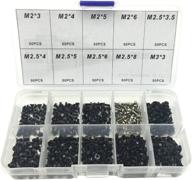
Comprehensive 500pcs Laptop Screw Kit Set for 🔩 IBM HP Dell Lenovo Samsung Sony Toshiba Gateway Acer

12 Review

🔧 Premium Repair Replacement Screws & Tools for MacBook Pro Retina 15"/13" - Complete Bottom Case Set

10 Review

36-Pack Black Rubber PC CPU/Case Fan Screws/Rivets Set for Computer

11 Review
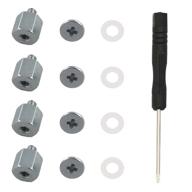
M.2 Screw Kit: Easy Mounting for NVMe SSDs on ASUS Motherboards

19 Review


